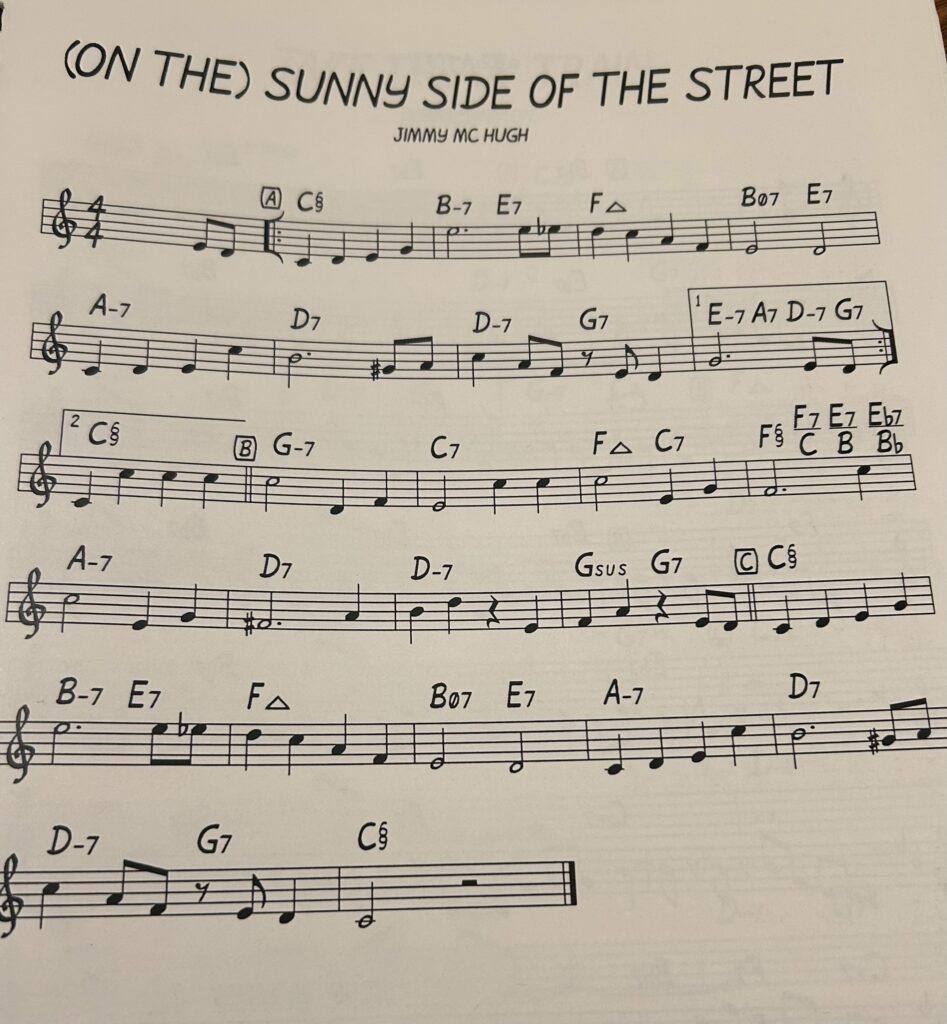Assignment: Create a jazz sextet arrangement (3 horns + rhythm section) of (On The) Sunny Side of the Street.
Submit: a concert score and transposed parts.
Due: Wed. Nov. 20 @ 9:05 a.m.
Value: 20% of final grade for the Jazz Arranging 1 class. 10% for draft work (due Nov. 13th & 18th), 10% for completed assignment.
There will be no option to revise, as students are now fully acquainted with the instructor’s expectations.
Assignments submitted on the Monday after Thanksgiving break will incur a 20% penalty; Monday, Dec. 2 is the absolute final deadline for sextet assignments.
Instrumentation: Three Horns + Rhythm Section
Write for three horns and rhythm section. Choose from alto sax, tenor sax, bari sax, trumpet, and/or trombone. The Jazz Messengers’ front line of trumpet, tenor sax and trombone is recommended. The rhythm section will include string bass, drum set and either piano or guitar. Furthermore, if writing for your own instrument, plan to have the part read by someone other than yourself.
Your sextet arrangement must include:
- an introduction
- an ending (“Fade out” endings are not permitted.)
- 3-horn writing, demonstrating a balance between unison and harmonized lines and incorporating the voicing outlined in the text book
- thoughtful writing for the rhythm section. This might involve “hits,” rhythmic punctuations, “stop-time” and/or a written bass line.
- a rhythmic melody interpretation (not all quarter notes, as you might see in a fake book.)
- some reharmonization
- “changes” (chord progression) for improvisation, not written above the melody statement. [A separate section.]
- solo backgrounds
- A logical “road map,” requiring no verbal explanation.
- A soli (minimum duration of 8 measures.)
Refer to the idea generation handouts to spark your creativity.
Guidelines for score and parts:
- As stated in the syllabus, use computer notation software for all but one of your assignments.
- Rehearsal letters are required.
- Measure numbering is encouraged.
- Include: title, instrument name, composer and arranger credits.
- Use clef, key and time signatures, and other standard notation practices.
- Indicate the tempo and feel.
- Number pages. Include title and part on subsequent pages.
- Don’t forget details such as dynamics and articulation markings.
- Format rhythm section parts using 4 measures per line when possible, to easily convey phrases.
- Tape together all parts.
In addition, spend some time looking at ensemble parts and scores to develop your personal notation style that adheres to musical conventions.

